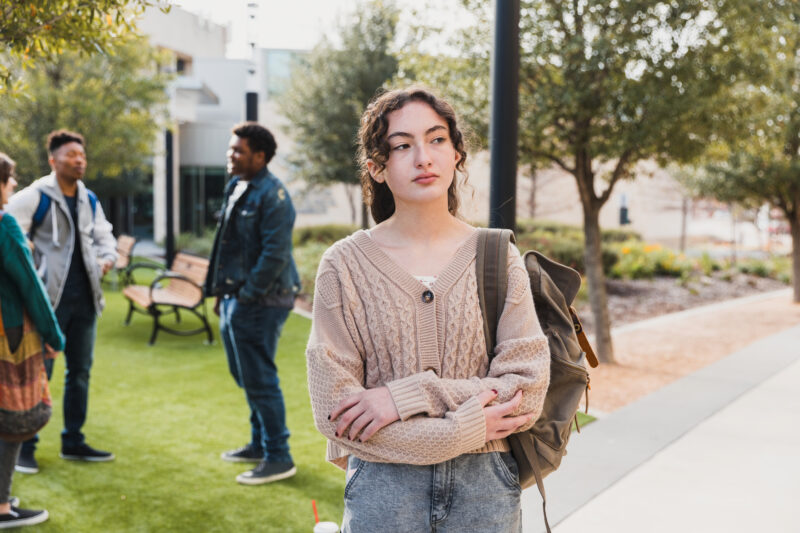
Table of Contents
Is Substance Abuse Worse in the Summer? Here’s the Data
Written By: Charlie Health Editorial Team

Clinically Reviewed By: Nicole Lonano
June 6, 2025
4 min.
Data highlighting how seasonal changes affect drug and alcohol misuse—plus tips on how to access compassionate, evidence-based care.
Learn more about our Clinical Review Process
Table of Contents
Substance misuse doesn’t take a summer break, in fact, research suggests that for many people, the risks might actually increase with the heat. Of course, substance use disorders (SUDs) and substance misuse can happen year-round, but studies show that warmer weather may be a significant risk factor.
The summer months have long been linked to drug and alcohol use, in part due to more social events, outdoor festivals, and heat-related stress. Whether it’s trying a substance for the first time or experiencing a spike in health-related consequences, data shows that summer presents unique substance use-related concerns.
To better understand the connection between seasonality and substance use, Charlie Health reviewed findings from recent studies and national data. Below are insights on how heat and timing impact alcohol and drug use, as well as tips about how to get support for concerning drug or alcohol use.
If you or someone you know is struggling with substance use, Charlie Health is here to help. Our virtual treatment programs offer evidence-based, compassionate care for individuals navigating complex behavioral health challenges, including SUD. Fill out our quick form to connect with a member of our Admissions Team and take the first step toward recovery today.
Join the Charlie Health Library
Get mental health updates, research, insights, and resources directly to your inbox.
You can unsubscribe anytime.
1. People might be more likely to try drugs and alcohol for the first time during the summer
A large national study published in 2017 found that summer is a high-risk season for trying drugs for the first time. The highest seasonal spike was seen in first-time LSD use, with over one-third of people (34%) trying the drug for the first time in the summer, researchers found. Similarly, nearly one-third of first-time cannabis use (30.4%) and over one-quarter of first-time ecstasy/MDMA and cocaine use (29.8% and 27.5%, respectively) occurred during the summer.
These seasonal patterns were generally consistent across sex, age, and race, but there were some outlying data points. For instance, Black people were less likely to initiate cocaine use in summer compared to other groups (18.2% vs. 26.8–39.3%, respectively).
This study set out to explore whether summer is a high-risk time for people in the U.S. to try drugs for the first time, and concluded, for many: yes. By understanding how drug use patterns change with the seasons, researchers hope to improve prevention efforts.
2. Heat can increase hospital visits for alcohol and drug-related issues
Hot weather can increase the risk of alcohol- and substance-related hospital visits, according to a large study of data from New York State published in 2023. In the report, researchers found a link between rising temperatures and emergency room visits related to alcohol or substance use. For instance, when temperatures rose from extremely cold to around 66°F, hospital visits for alcohol-related disorders increased by nearly 25%.
Similarly, substance-related hospital visits, including those linked to cannabis, cocaine, opioids, and sedatives, rose nearly 38% as temperatures climbed to about 51°F. These associations held across age, sex, and levels of social vulnerability, suggesting that hotter months may pose a concern for drug and alcohol misuse.
3. Some adult alcohol use increases in the summer, and in warmer climates year-round
Alcohol consumption tends to rise with the temperature, both seasonally and year-round, particularly for adults. A 2021 study analyzing urine drug tests over seven years found that alcohol use peaks in the summer and drops in the winter, with the highest positivity rates among men ages 45 to 64.
Similarly, a 2024 study in Mexican cities found that people living in hotter climates were more likely to binge drink. For every 1°C increase in average annual temperature, binge drinking rose by nearly 1% among people over the age of 18. Together, these findings suggest that both seasonal heat and long-term climate may influence alcohol use patterns, especially for adults.
4. Not all groups follow the same seasonal patterns
It’s worth noting that substance use doesn’t rise in the summer for everyone. In a 2016 study of 462 college freshmen, researchers found that alcohol use actually dropped by 29% during the summer. Among this cohort, the most drinking happened during on-campus events, with a sharp increase again when students returned to school in the fall. This underscores the role of context (like being at home versus at college) in shaping seasonal behaviors.
If you or a loved one is struggling with substance misuse or SUD, you’re not alone. Charlie Health’s virtual programs provide compassionate, evidence-based support for people facing serious behavioral and mental health concerns, including SUD. With flexible scheduling and personalized care, we’re here to support you every step of the way. Complete our quick form to connect with our Admissions Team and begin your recovery journey today.
References
https://pmc.ncbi.nlm.nih.gov/articles/PMC7080950/
https://www.nature.com/articles/s43856-023-00346-1
https://www.sciencedirect.com/science/article/pii/S0376871621004038
https://globalizationandhealth.biomedcentral.com/articles/10.1186/s12992-024-01033-z
https://pmc.ncbi.nlm.nih.gov/articles/PMC4819255/





